Aldea Gyochon en Gyeongju (경주 교촌마을)
1.8Km 2025-04-24
Gyochon-gil 39-2, Gyeongju-si, Gyeongsangbuk-do.
Situada en la ciudad de Gyeongju, la Aldea Gyeochon es un pueblo de casas tradicionales hanok que permite a los visitantes ver la vida del famoso clan Choi. Los visitantes pueden ver su casa y probar el licor Beopgju Gyodong de Gyeongju.
Bosque Gyerim de Gyeongju (경주 계림)
1.8Km 2025-08-11
Gyo-dong, Gyeongju-si, Gyeongsangbuk-do.
El bosque Gyerim se encuentra entre el observatorio Cheomseongdae y la fortaleza Wolseong de la ciudad de Gyeongju. El bosque está densamente poblado por antiguas zelkovas y sauces arraigados en suaves colinas y a lo largo del pequeño arroyo en la parte noroeste del bosque. Según la leyenda, el bosque está estrechamente relacionado con los mitos que rodean el nacimiento de Alji, el fundador del clan Kim de Gyeongju. Como tal, fue designado Sitio Histórico Nacional.
La leyenda cuenta que el rey Talhae escuchó a un gallo cantando desde lo más profundo del bosque Sirim. El canciller Hogong fue enviado a investigar. Al llegar, se encontró con un gallo debajo de un árbol en el que colgaba una caja de oro. Hogong de inmediato reportó su hallazgo al rey, quien le dio instrucciones para traer la caja de oro al palacio. El rey abrió la caja y encontró a un niño pequeño, Kim Alji. El bosque, que había sido llamado 'Sirim' o 'Gurim' fue sustituido por 'Gyerim' ('gye' significa gallo'). El nombre Gyerim también fue usado para referirse al reino de Silla.
Alji fue adoptado como hijo del rey, pero como la corona fue legada al rey Pasa de la familia Park, nunca ascendió al trono. El clan Kim volvió al linaje real con la coronación del rey Naemul unos años más tarde.
El monumento de piedra que registra el nacimiento de Kim Alji fue erigido en el tercer año del rey Sunjo en la dinastía Joseon. Situado cerca de la fortaleza real de Silla, el bosque está aún profundamente reverenciado como lugar del místico nacimiento del primer antepasado de la familia real del clan Kim de Silla. Encontramos flores amarillas de colza a lo largo del camino que conecta Daereungwon con Gyerim y Banwolseong, contribuyendo al ambiente mágico del bosque.
Escuela Confuciana Gyeongju Hyanggyo (경주향교)
1.8Km 2025-05-26
Gyochon-angil 27-20, Gyeongju-si, Gyeongsangbuk-do
Gyeongju Oreung Hanok (경주오릉한옥)
1.9Km 2025-07-18
12-17, Gukdang 2-gil, Gyeongju-si, Gyeongsangbuk-do
Oreung Hanok in Gyeongju, is a guesthouse just across Namcheon Stream from Gyeongju’s Five Royal Tombs (‘oreung’ in Korean). The guesthouse’s location gives it a panoramic view not only of the tomb complex but over much of the 1,000 year old city of Gyeongju. The cozy rooms have double doors to block drafts and noise, and clean white bedding; while the spacious yard outside is a good spot for taking photos. The bustling Hwangnidan Street is a 15-minute walk away, while must-see sites Cheomseongdae, the Daereungwon tomb complex, Donggung Palace and Wolji Pond are 10 minutes away by car.
Yosukgung 1779 (요석궁1779)
1.9Km 2025-09-02
19-4 Gyochonan-gil, Gyeongju-si, Gyeongsangbuk-do
Huewon (경주휴원)
2.0Km 2025-06-04
154, Chunghyoseoak-gil, Gyeongju-si, Gyeongsangbuk-do
Puente Woljeonggyo (월정교)
2.0Km 2025-03-17
Gyo-dong 274, Gyeongju-si, Gyeongsangbuk-do
Gyeongjuhanok 1st (경주한옥1번가)
2.1Km 2025-07-24
20, Cheonwon 1-gil, Gyeongju-si, Gyeongsangbuk-do
Standing at the entrance of Cheonwon Village in Gyeongju, Gyeongsangbuk-do, Gyeongju Hanok First is a hanok stay combining the beauty of tradition with modern convenience. All rooms are Korean-style with comfortable bedding on the floor, and all have a toilet and bathroom. One guestroom has its own kitchen, while the others have basic cooking facilities in a shared kitchen. The spacious yard is decorated with figurines in traditional clothes. Nearby tourist attractions include Anapji Pond, Cheomseongdae Observatory, and Gyeongju Museum.
Kelimgung (계림궁)
2.1Km 2025-07-18
932, Poseok-ro, Gyeongju-si, Gyeongsangbuk-do
Kelimgung is a comfortable hanok pension near the Oreung tombs in, Gyeongju, Gyeongsangbuk-do; the name derives from Gyerim, the forest birthplace of Kim Alji who helped found the ancient Silla kingdom. The main building has four rooms and a shared kitchen, and there are two guest rooms in the yard, where barbecues can be held; reservations are required. Residents can experience traditional activities such as Gamasot cooking and Neolttwigi, and enjoy strolling in the nearby Oreung. Other nearby attractions include Banwolseong, Cheomseongdae, and Daereungwon.
Seokbinggo en Gyeongju (경주 석빙고)
2.2Km 2023-02-20
Inwang-dong, Gyeongju-si, Gyeongsangbuk-do.
Seokbinggo significa "congelador hecho en las rocas". Es un refrigerador antiguo de Corea, único en el mundo, y está situado en Gyeongju, la antigua capital del reino de Silla (57 a.C.-935). La apariencia externa de esta maravilla es sumamente humilde y simple. Sin embargo, no se sentirá defraudado una vez se haya asomado a la entrada de este congelador, pues sentirá el frío proveniente del interior de la estructura rocosa. La mitad de Seokbinggo se encuentra en el subsuelo mientras que la otra mitad está por encima del nivel del suelo, demostrando la propensión científica de la gente de Silla. Su piso, paredes y techo están hechas de granito y tiene una entrada de aire. Las paredes están cubiertas de cal para impedir el paso de la humedad y agua. El piso está inclinado para permitir que el hielo derretido fluya fuera de la cabina. Como material aislante, se usó la paja, cuyo poder aislante es altamente eficaz según experimentos realizados por científicos de la actualidad. El hielo conservado en este congelador era una de las delicias preferidas de la clase noble. En los anales históricos se hallaron registros sobre este Seokbinggo y se tienen pruebas de que fue construido, al menos, hace 1.500 años.
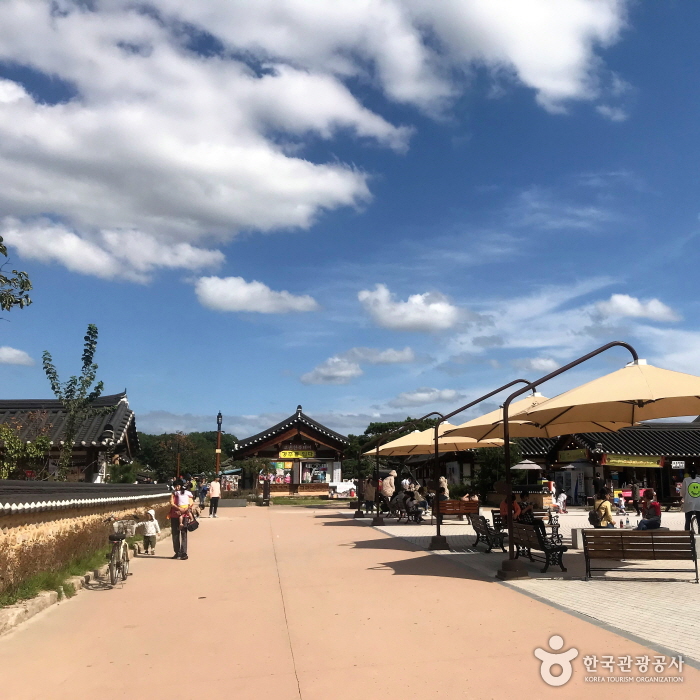

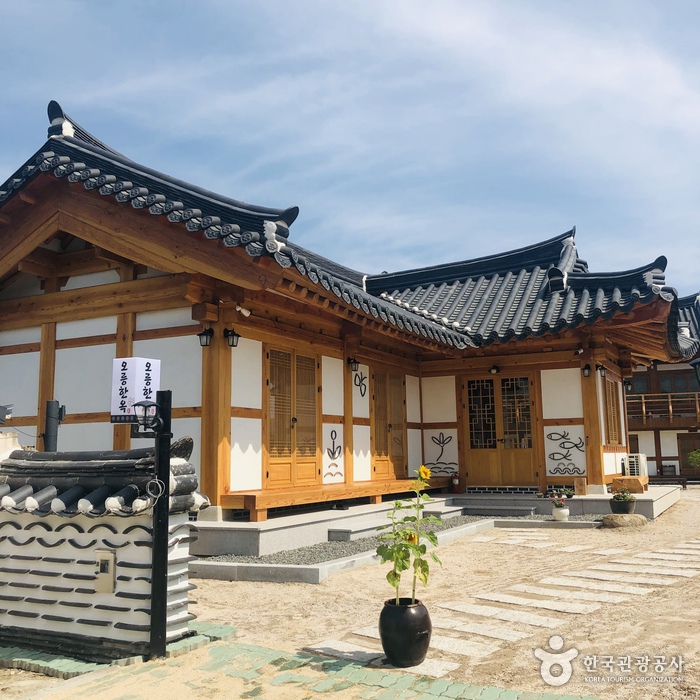
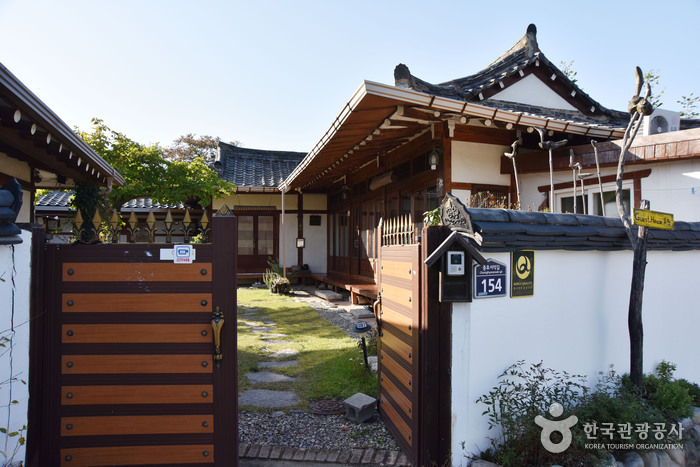
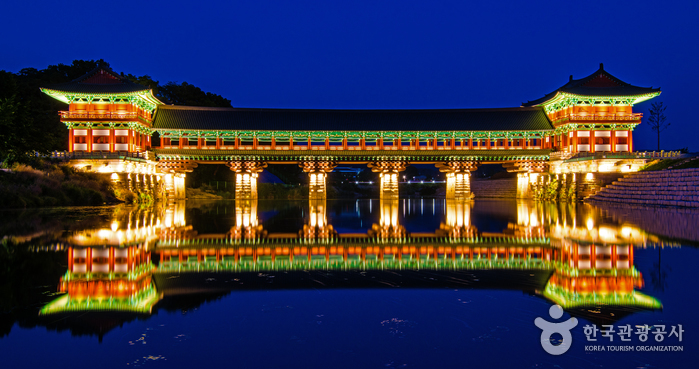
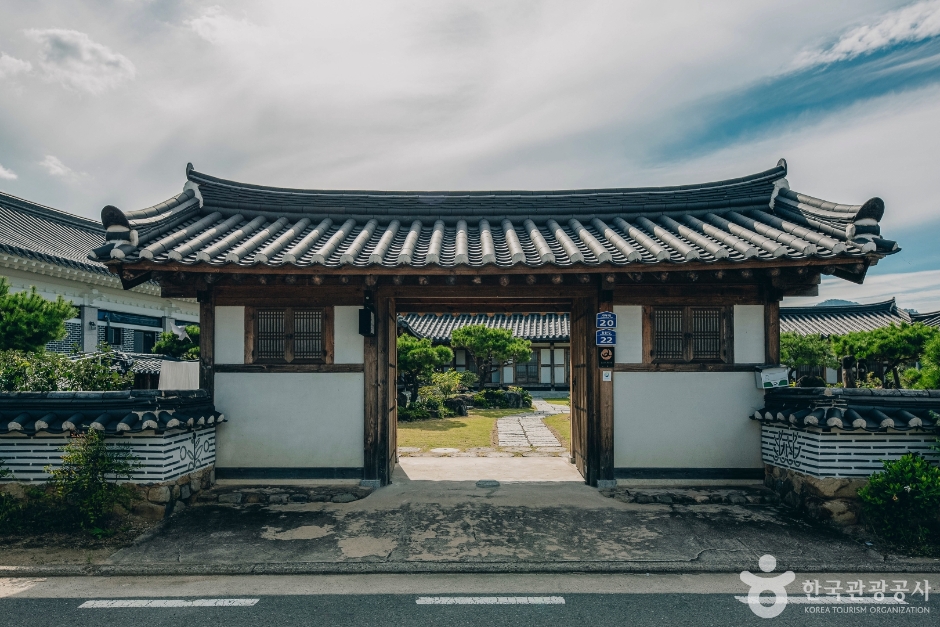
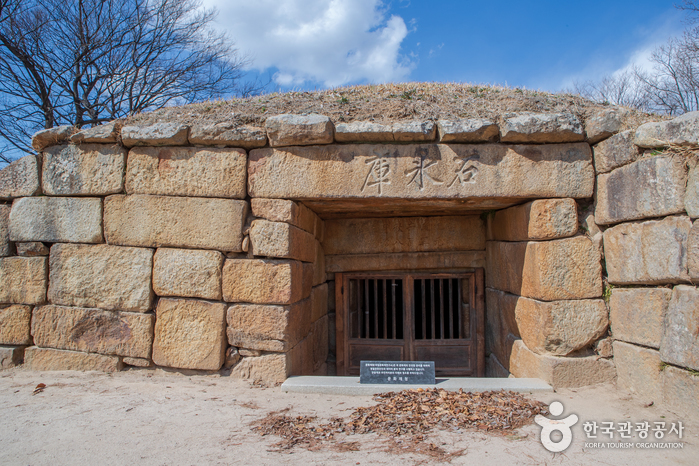
 Español
Español
 한국어
한국어 English
English 日本語
日本語 中文(简体)
中文(简体) Deutsch
Deutsch Français
Français Русский
Русский